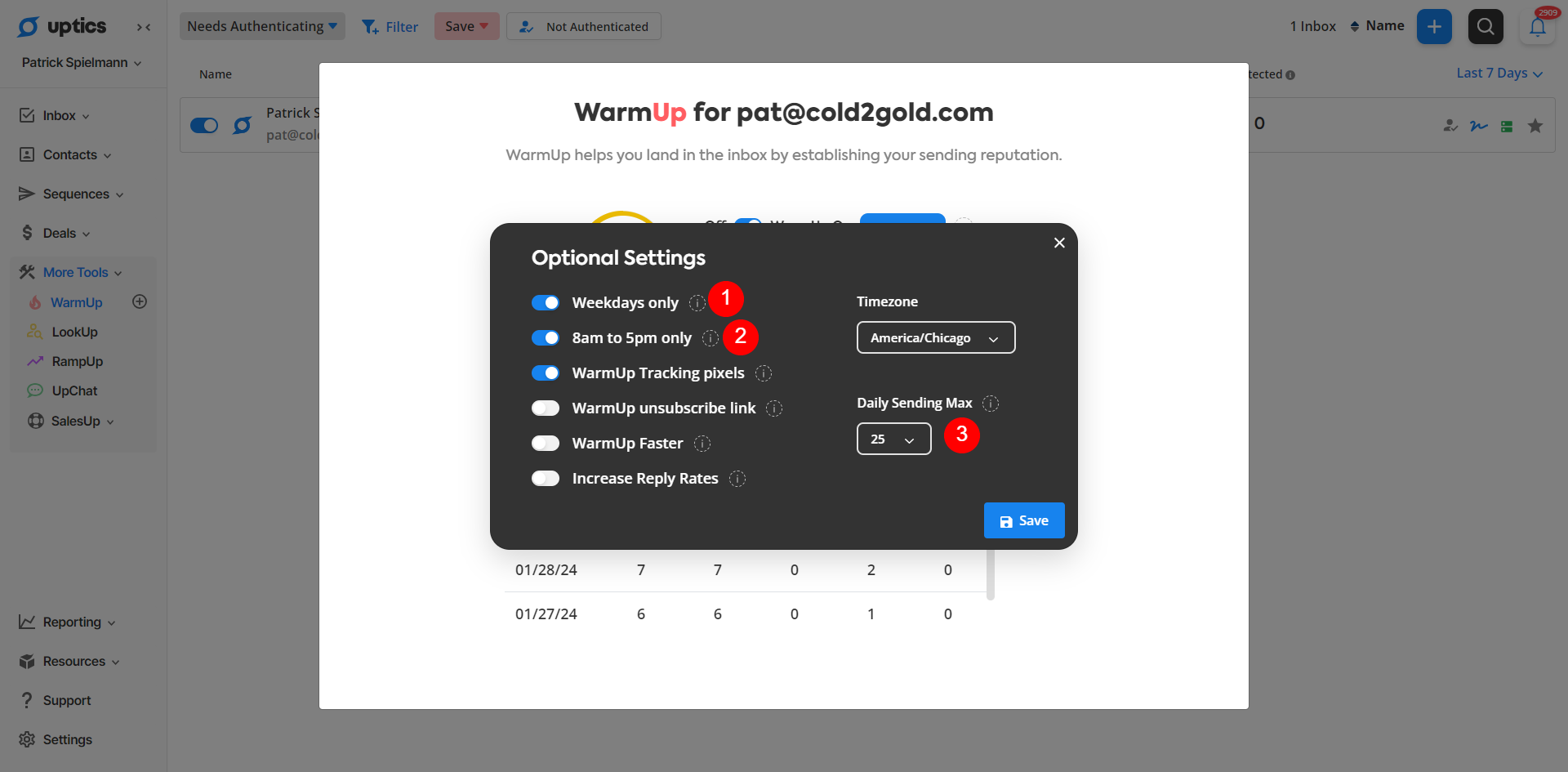Navigating the transition from email warmup to active sending is crucial for maintaining a strong sender reputation and ensuring high deliverability rates. This guide will address key questions and provide a clear pathway for Uptics users to transition smoothly from the email warmup phase to actively sending emails, ensuring your communication reaches its intended audience effectively.
For New Domains: If you've recently purchased a new domain, it's essential to undergo a warmup period of at least 1 month. This period allows your domain to establish a positive sending reputation.
For Existing Domains: If your domain has a history of sending emails, you may be able to start sending immediately. However, this depends on the domain's past sending behavior and reputation.
If you're working with an existing domain with a prior sending history, consider using the 'WarmUp Faster' feature. This option can accelerate the warmup process, adjusting it based on your domain's unique sending history and reputation.
Keep a close eye on your WarmUp score. A score above 94% is a good indicator from the start, but aim for a score of 97% or higher over the past 7 days before transitioning to active sending. This high score reflects a strong sender reputation and is crucial for a smooth transition.

Once you've met the above criteria and are ready to start sending emails actively, follow these best practices to maintain a healthy sender reputation:
Adjust Warmup Settings: Switch your warmup settings to 'Weekdays only' with an active time window from 8 am to 5 pm. This schedule aligns your sending activity with standard business hours, enhancing engagement rates.
Control Daily Email Volume: Initially, set your daily email sending limit to 25. This cautious approach allows you to continue building your sender reputation while engaging with your audience.
Monitor Engagement and Deliverability: Keep a close eye on key metrics such as open rates, click rates, and bounce rates. These indicators will help you understand your audience's engagement and the overall health of your email campaigns.
Gradually Increase Volume: As your sender reputation strengthens, you can gradually increase your daily sending volume for live emails. Ensure that this increase is incremental and based on positive engagement and deliverability metrics.

Transitioning from email warmup to active sending is a critical phase in your email marketing journey. By adhering to the guidelines outlined in this guide, you can ensure a smooth transition, maintain a strong sender reputation, and achieve high deliverability rates. Remember, the key is to be patient, monitor your metrics closely, and adjust your strategy based on performance and feedback.
For any further assistance or questions, the Uptics support team is ready to help you navigate this process successfully.
Article related to:
When you can safely start sending emails after the WarmUp period
When is it safe to start sending emails after warmup?
How long should I keep my email in warmup before going live?
What are the indicators that my email is ready for active sending?
Can I begin active email campaigns immediately after the warmup period?
What steps should I follow to transition from warming up my email to active sending?
Is there a recommended warmup duration before launching full email campaigns?
How do I know if my email warmup is sufficient for starting my email outreach?
What criteria should my email meet after warmup to start sending actively?
When can I confidently switch from email warmup to engaging my audience directly?
What are the best practices for moving from an email warmup phase to active email marketing?